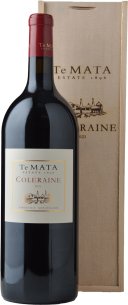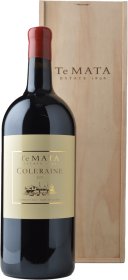Chateau Pontet-Canet 5me cru classe
Chateau Pontet Canet is a large Pauillac estate that can trace its origins back to 1725, when Jean-François Pontet gave his name to the estate he had acquired. The wine was not château-bottled until 1972 and in 1975 the property was sold to Guy Tesseron, who also owns Château Lafon-Rochet in St-Estephe. Today it is owned and run by Alfred and Michel Tesseron. Pontet-Canet's 78 hectares of vineyards adjoin those of Mouton Rothschild and are planted with Cabernet Sauvignon (63%), Merlot (32%) and Cabernet Franc (5%). The Tesserons have vastly improved the quality of the Pontet-Canet wines which are now full-bodied and packed with ripe, chewy, black fruits and finely integrated tannins. The wines have great ageing potential. Pontet-Canet is classified as a 5ème Cru Classé.. It was the first major Bordeaux wine producer to earn official organic certification, and its biodynamic production is a hallmark of its current operations.
Chateau Rauzan-Segla 2me cru classe
One of the original Second Growths of the Bordeaux Classification of 1855, Rauzan-Ségla's 51 hectares of mineral rich soils begin on the banks of the Gironde, on the left bank of Bordeaux. A complex mix of gravel, clay and limestone subsoil imparts a richness and complexity to the Cabernet (62%), Merlot (36%), Cabernet Franc (1%) and Petit Verdot (1%) grapes used to produce this powerfully intense and elegant wine. The estate was last sold in 1994 to the Wertheimer family of Chanel, who employed former Château Latour winemakers, David Orr and John Kolasa. Nicolas Audebert, the former winemaker at Cheval des Andes, the LVMH property in Mendoza Argentina, was hired to succeed John Kolasa following his retirement in 2014.
Château Pavie Saint-Emilion Grand Cru Premier Grand Cru Classé
Chateau Cos d'Estournel 2me cru classe
Majestic, intense, full bodied and tannic, Cos dEstournel is considered the leading wine of St Estèphe. Highly tannic in its youth, over time it develops much much like the great wines of adjoining Pauillac. The wine is typically a blend of 60% Cabernet Sauvignon, 38% Merlot and 2% Cabernet Franc, consistently displaying immense power and evident breed.
CHATEAU LA MISSION-HAUT-BRION Cru classe
Château la Mission Haut-Brion is on uniquely stony soil in the Pessac-Léognan appellation close to the city of Bordeaux. It is a Cru Classé in the Graves Classification of 1953. The 22.5 hectare red wine vineyard is planted to Cabernet Sauvignon (46%), Merlot (44%) and Cabernet Franc (10%). The chateau wine is vinified in large (180hl) temperature-controlled, stainless steel vats and aged in 100% new French oak for an average of 22 months. Annual production is 6000-7000 dozen. The famous white wine of the chateau comes from 3.5 ha planted to Semillon (62%) and Sauvignon Blanc (38%). Overall planting density is 10,000 vines per hectare (red) and 8000 vines per hectare (white). Since 1983, under the ownership of Domaine Clarence Dillon (which also owns the neighbouring Chateau Haut Brion), the entire estate has been renovated vineyards, winemaking facilities and the chateau itself. The property got its name in the 1600s when it was owned by the Catholic Church.
Te Mata Estate Coleraine Cabernet Sauvignon Merlot Cabernet Franc
TE MATA ESTATE Coleraine. Cepage may include Cabernet Sauvignon, Merlot, and Cabernet Franc. Hawkes Bay, New Zealand
Château Figeac
Shangri-La Ao Yun Cabernet Cabernet Franc,
Luring luxury connoisseurs from around the globe, this Chinese red is making waves internationally for being the first legitimately competitive high-end wine to come out of the countrys developing wine production industry. Its production is a long, complex story of cooperation between the CEO of Moët Hennessy, Australian enologist Tony Jordan, the Chinese government and Tibetan farmers - and its yielded something spectacular. The name Ao Yun means roaming above the clouds - and the name is apt, as the vineyards which produce it rise up to 2,600 metres at the foot of a sacred mountain in Yunnan province, not far from the famed city of Shangri-La on the fringe of the Himalayas. This spellbinding terrain has produced a wine of powerful flavour, complex spice, and a silky texture with tannin to spare and massive aging potential. Dont miss your chance to own a piece of wine-making history from a nation with the potential to become a powerhouse.
Cullen Vanya Cabernet Sauvignon
Certified biodynamic, the Cullen Vanya is 97% Cabernet Sauvignon complemented by 3% Petit Verdot. Aged in new French oak of which 50% was new for a period of 19 months. Totally opaque dark red black colour with a dark red hue. Intense but beautifully refined the nose offers up aromas of blackcurrant and mulberry laced with cedar and tobacco characters followed by hints of cigar box, faint bay leaf and spice. Medium weight the palate is the perfect marriage of richness, elegance and power delivering sublime flavours of blackcurrant, ripe mulberry and dark cherries seamlessly integrated with cedar, tobacco and spice characters. Exquisite finesse with exceptionally fine grained, polished tannins. Very long after-taste of blackcurrant, ripe mulberry, cedar faint tobacco, cigar box and spice that seems to sail on forever.


















